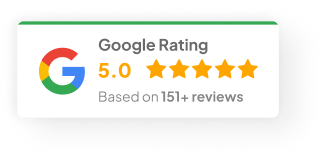29 Sep 25
Hidden Pitfalls of Cheap eCommerce Templates
Starting an online store feels exciting. There’s energy, ideas, and probably a bit of pressure to get things moving quickly. And the first big decision? What the site will actually look like. For a lot of owners, the obvious move is to grab a pre-made eCommerce template from Shopify, WooCommerce, or BigCommerce. It’s fast, affordable, and seems professional enough to get off the ground.
That first impression is what makes templates so appealing. But here’s the bit many business owners only realize months later: cheap templates come with strings attached. And those strings can quietly pull down performance, conversions, even sales.
What Templates Actually Are
At their core, eCommerce templates are just pre-built website shells. Swap in your logo, add products, change a few colors, and you’ve got something ready to launch.
Most will come with:
- Product page and checkout layouts
- Fonts, colors, image settings
- A cart and maybe a search or filter function
Some are free, others cost a couple hundred dollars. Either way, they exist to make the setup painless for non-technical users.
Why They’re So Tempting
It’s not hard to see why people go for templates, especially at the beginning.
- You can launch in days, not months
- Costs are minimal compared to custom builds
- They’re user-friendly for anyone who’s not a developer
- Many follow standard online shopping patterns, so customers know where to click
The catch is, those benefits only cover the surface. Dig deeper or grow bigger and problems start showing up.
Where Cheap Templates Fall Short
1) Everyone Looks the Same
Templates aren’t built for uniqueness. They’re built for mass use. That’s why so many stores end up looking near-identical. Adobe once reported that 38% of people stop engaging with a site if the layout or content feels unattractive. That stat has been floating around since 2015, but the point still holds—if your store looks like the next guy’s, you’ll bleed attention fast.
2) Performance Problems
Cheap templates often carry too much baggage in the code. And bloated code equals slow load times. Google says 53% of mobile users bounce if a page takes more than three seconds to load. Three seconds. That’s half your potential customers gone before checkout even comes into play.
3) Growth Roadblocks
At some point, most businesses want more—loyalty programs, better product filters, maybe a personalized recommendation engine. Templates usually aren’t built for that kind of growth. You either hit a wall or end up hiring developers to bolt features on, which wipes out the “affordable” advantage.
4) SEO Issues
Organic search still drives nearly half of eCommerce traffic. Problem is, a lot of templates don’t give you clean, flexible code to optimize for search. And if Google can’t crawl your products properly, it’s like setting up shop in the middle of the desert.
5) Security Gaps
Many budget templates aren’t updated regularly. That leaves vulnerabilities open. And in a landscape where eCommerce fraud is forecasted to hit $48 billion globally, skipping updates isn’t just risky—it’s expensive when it goes wrong.
6. Conversion Isn’t Built In
Looking good isn’t the same as selling well. Templates are usually designed for aesthetics, not strategy. Without custom tweaks—trust signals, calls-to-action in the right places, streamlined checkout—conversion rates tend to stall out.
Why Custom Design Pays Off
A professional web design agency works differently. They’re not just painting over a template—they’re building with growth in mind. The focus is on:
- Branding that feels unique to the business
- Custom features aligned with specific goals
- User experience that pushes sales forward
- SEO architecture that actually works
- Long-term security and ongoing support
That kind of foundation does more than look good. It builds trust, drives traffic, and converts visitors into customers.
Choosing the Right Agency
If moving beyond templates feels like the next step, finding the right partner matters. A few things worth checking:
- A proven history with eCommerce projects
- A portfolio that shows creativity and results
- Knowledge of the specific industry
- Conversion-focused strategy, not just design skills
- Clear commitment to long-term support
Why Chromatix
Chromatix has been doing this for over a decade, focusing on eCommerce sites that actually sell, not just sit there. Every project is built with behavior, psychology, and data in mind. That’s the difference between a cookie-cutter site and one that genuinely moves the needle.
For businesses ready to step past the limitations of templates, working with a specialist team like Chromatix is less an expense and more an investment in growth.
Wrapping Up
Templates are fine if the goal is speed and budget. But they carry hidden pitfalls—slow speeds, SEO headaches, limited scalability, conversion problems—that often show up when it matters most.
Custom design fixes those issues by focusing on long-term growth, security, and sales performance. For any business that wants to stand out and compete online, the right design partner can make all the difference.
So, curious—if you’re running an online store right now, are you still on a template? Or thinking it might be time to move past it?


